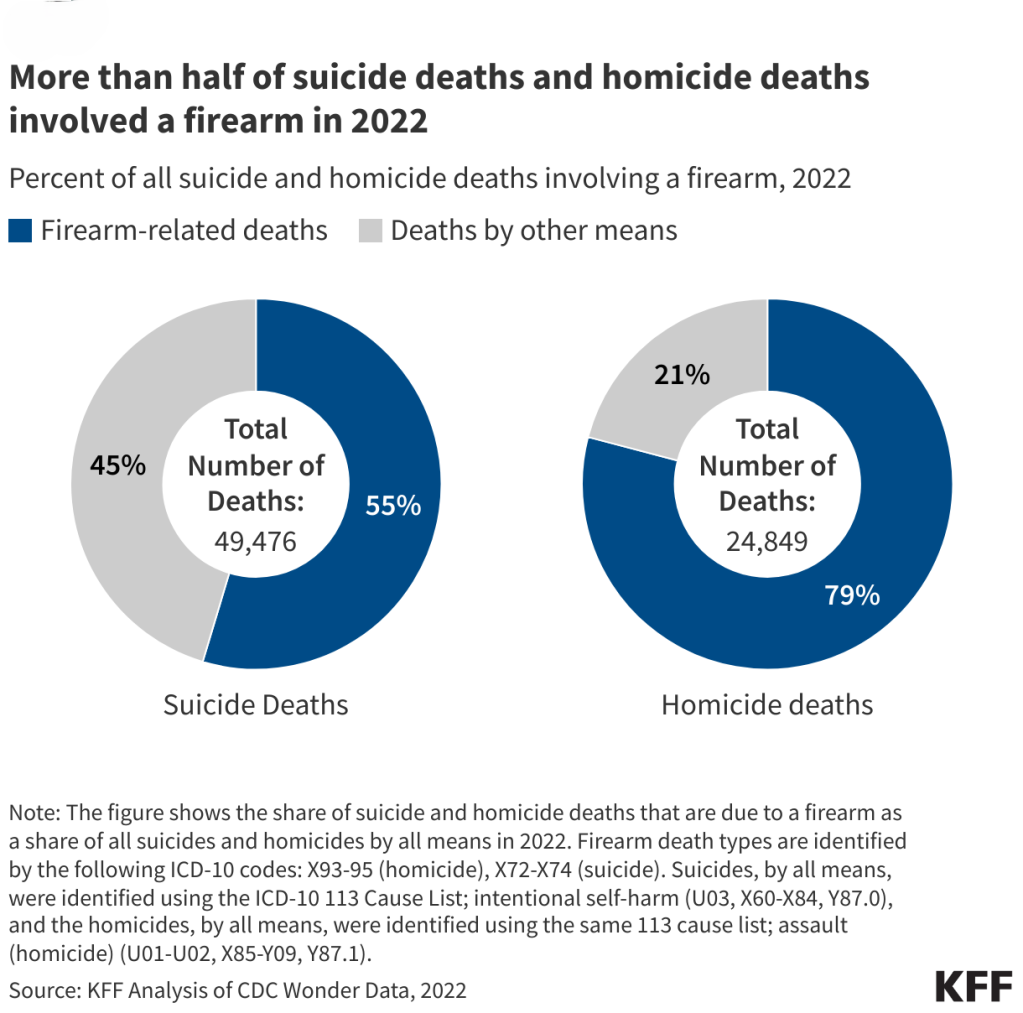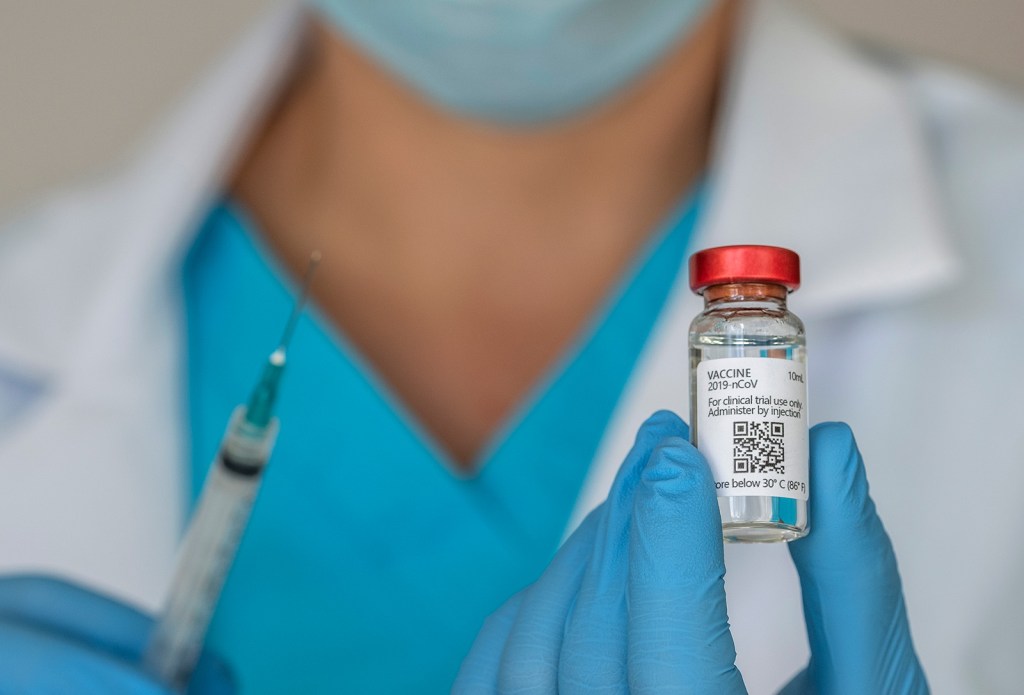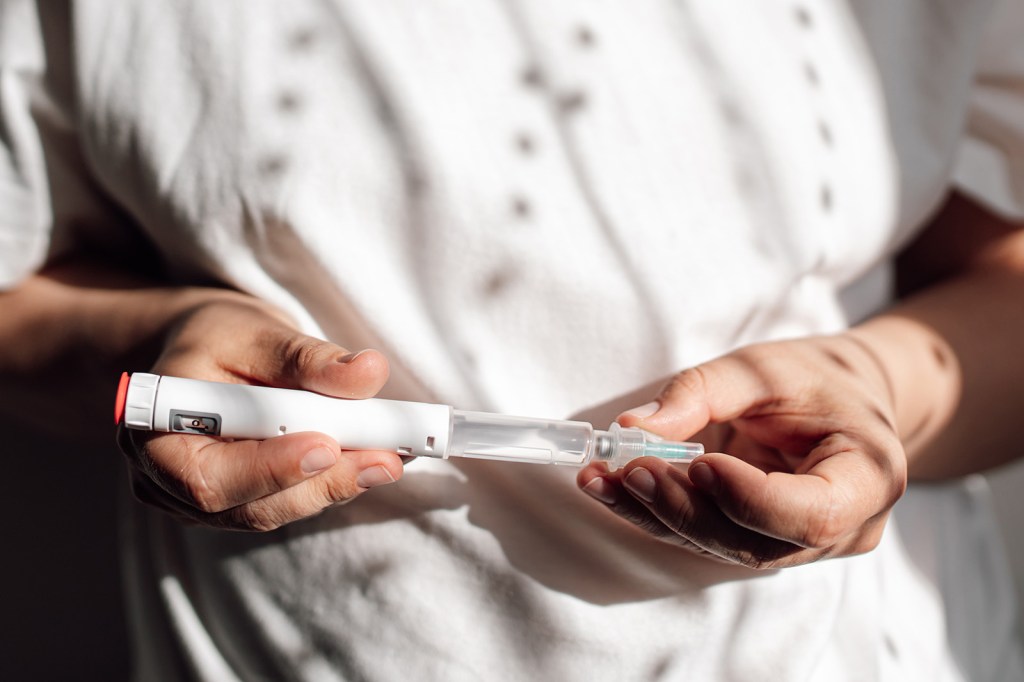This fact sheet does not reflect recent changes that have been implemented by the Trump administration, including a foreign aid review and restructuring. For more information, see KFF’s Overview of President Trump’s Executive Actions on Global Health, and also see the KFF fact sheet on the Trump administration’s foreign aid review and the status of U.S. support for Gavi.
Key Facts
- Gavi, the Vaccine Alliance (Gavi) is an independent public-private partnership and multilateral funding mechanism that aims to expand global access to and use of vaccines, particularly among vulnerable children.
- Since its launch in 2000, Gavi has provided approximately $23 billion to support immunization efforts in low- and middle-income countries, not including funding for COVAX.
- The U.S. government (U.S.) has supported Gavi since its creation through direct financial contributions, participation in Gavi’s governance, and technical assistance.
- The U.S. is the third largest contributor to Gavi and its second largest government contributor, providing 12% overall and 15% of government funding (not including COVAX). U.S. annual contributions have grown over time, reaching $300 million in FY 2024. Additionally, the U.S. recently pledged at least $1.58 billion to Gavi over the next five years for its next replenishment period.
- Additionally, the U.S. was the largest donor to COVAX, providing $4 billion in emergency funding in FY 2021 to this multilateral effort to equitably procure and distribute COVID-19 vaccines globally. Co-led and administered by Gavi, COVAX came to an end in 2023, with COVID-19 vaccines and funding now integrated into Gavi’s regular programming.
- Despite past progress in expanding access to childhood vaccinations, the COVID-19 pandemic had a detrimental impact on childhood immunization efforts in many countries, presenting new challenges for Gavi and partners going forward.
- Gavi is now launching its next replenishment effort to raise resources for the 2026-2030 period, with a pledging conference expected later this year, as well as an update to its five-year strategy.
Gavi Overview
Created in 1999 and formally launched in January 2000, Gavi, the Vaccine Alliance (Gavi) is an independent public-private partnership and multilateral funding mechanism that “aims to save lives and protect people’s health by increasing coverage and equitable and sustainable use of vaccines.” Gavi’s main activities include supporting low- and middle-income countries’ access to new and underused vaccines for vulnerable children through financial support, technical expertise, and market-shaping efforts, such as negotiating with manufacturers, to help lower the cost of procuring vaccines. Gavi operates in five-year funding cycles, with a revised strategy and goals for each cycle. Each five-year strategy is accompanied by a vaccine investment strategy, which determines which vaccines will be made available to countries.
Gavi’s current five-year strategy, for the 2021-2025 period, which is its fifth strategy, includes four core goals:
1. introduce and scale-up vaccines,
2. strengthen health systems to increase equity in immunization,
3. improve sustainability of immunization programs, and
4. ensure healthy markets for vaccines and related products.
The current strategy emphasizes reducing the number of ‘zero-dose’ children with the goal of reaching no zero-dose children by 2030; prioritizing programmatic and financial sustainability of country immunization programs; supporting countries that have phased out of Gavi support or have never been eligible for Gavi support; and providing more tailored approaches for Gavi countries to reach under-vaccinated populations, such as those living in remote or conflict settings, by encouraging countries to adopt strategies that reduce potential barriers to vaccination. Gavi is currently in the process of developing its sixth strategy.
In addition to Gavi’s role in routine childhood immunizations, Gavi was one of the organizations leading COVAX, a multilateral effort that supported the equitable development, procurement, and delivery of COVID-19 vaccines globally that began in 2020 and ended in 2023. Gavi’s role in COVAX was to facilitate the procurement and delivery of COVID-19 vaccines, with particular emphasis on low- and middle-income countries. Provision of COVID-19 vaccines and funding support to countries has now been integrated into Gavi’s regular programming; however, COVID-19 vaccine support will be discontinued after 2025.
Organization
Gavi’s Secretariat, with its main headquarters in Geneva and an office in Washington, D.C., carries out the day-to-day operations of the partnership. Gavi does not have program offices or staff based in recipient countries but rather relies on country health ministries and World Health Organization (WHO) regional offices to implement programs. Gavi is led by a Chief Executive Officer (CEO), currently Sania Nishtar.
The 28-member Gavi Board sets Gavi’s funding policies and strategic direction, and monitors program implementation. It includes 18 “representative” seats, nine seats for independent individuals, and one ex-officio non-voting seat for Gavi’s CEO. The 18 representative seats, as specified in Gavi’s statute, are as follows: donor country governments (5), implementing country governments (5), the WHO, the United Nations Children’s Fund (UNICEF), the World Bank, and the Bill & Melinda Gates Foundation, and one seat each for civil society groups, the vaccine industry in industrialized countries, the vaccine industry in developing countries, and technical health/research institutes. Additionally, several Board committees guide and advise the Board and the CEO on Gavi activities under their purview. The U.S. government is currently represented on Gavi’s Board as the Board member for the donor country government constituency and is a member of the Audit and Finance Committee, Programme and Policy Committee, and the Market-Sensitive Decisions Committee.
Funding
Since its 2000 launch, Gavi has received approximately $30 billion in financing, not including funding for COVAX (see Table 1).1 Approximately four-fifths (80%) of Gavi’s funding came from contributions provided by donor governments and private organizations and individuals. The top three government donors were the United Kingdom, the U.S. and Norway, while the largest private donor was the Gates Foundation.
Donors support Gavi through direct contributions as well as funding commitments to innovative financing mechanisms, the proceeds of which help support Gavi’s overall financing. These innovative financing mechanisms include the International Finance Facility-Immunisation (IFFIm) and the Pneumococcal Conjugate Vaccine (PCV) Advance Market Commitment (AMC). The IFFIm was created in 2006 and uses donor funding commitments to back the issuance of special bonds in capital markets, essentially providing “up-front” financing to Gavi. The PCV AMC began in 2010, and though it ended in 2020, it supported accelerated access to pneumococcal vaccines through up-front funding commitments from donors and continues to do so through contracts with manufacturers that extend until 2029. The U.S. does not provide support to either of these mechanisms.2
In addition to financing Gavi’s regular activities, donors pledged additional resources to support the Gavi COVAX Advance Market Commitment (COVAX AMC), a financial mechanism within COVAX that supported low- and middle-income countries through procurement and distribution of COVID-19 vaccines; through 2023, Gavi received $12.3 billion from donor governments, private philanthropy, and innovative financing mechanisms for the COVAX AMC for vaccine procurement, delivery, and logistics.3
Country Eligibility and Support
Eligibility
Only low- and middle-income countries with a Gross National Income (GNI) per capita below or equal to $1,730 on average over the last three years are eligible for Gavi support. In 2023, 54 countries were eligible for Gavi support; these included 23 of the 25 U.S. priority countries for maternal and child health assistance.
Recipient countries’ governments are expected to share responsibility for funding their national immunization efforts through Gavi’s co-financing requirements (introduced in 2008), determined according to country income level and transition status. As countries develop economically, they are expected to contribute a greater share of the funding required for immunization programs. Countries below the threshold (average of $1,730 GNI per capita over the past three years) and classified as low-income by the World Bank are initial self-financing countries, while countries below the threshold and classified as lower-middle income by the World Bank are in preparatory transition. Initial self-financing countries are responsible for co-financing the equivalent of $0.20 per dose each year. Countries in preparatory transition gradually increase their co-financing contribution each year.4 When a country’s income rises above the GNI per capita threshold, it moves into an eight-year “accelerated transition” period of increasing domestic financing share, after which the country is expected to fully fund its own immunization programs.5 As of 2023, 19 countries have transitioned out of Gavi financial support.
Additionally, as part of its 2021-2025 strategy, the Gavi Board approved limited support for countries that have transitioned out of Gavi eligibility and for middle-income countries (MICs) that have never been eligible for Gavi support.6 Recognizing that many formerly and never Gavi-eligible countries experience low coverage rates and have yet to make key vaccine introductions, an initial investment of $281 million was approved to provide limited support for 19 former and 26 never Gavi-eligible countries for political advocacy related to immunization, technical assistance, targeted assistance to reach under-vaccinated communities, and financial support for one-off costs and vaccine introductions.
Country Support
Gavi provides grant financing to country programs in the following five areas:
- Vaccine support (including for vaccine introduction, targeted campaigns, and routine campaigns),
- Health systems strengthening support (including to improve country data systems, supply chains, and community engagement, among other priority areas),
- Cold Chain Equipment Optimization Platform (CCEOP) support (for purchasing and deploying modern cold chain technology),
- Equity Accelerator Fund (EAF) support (for reaching zero-dose children and missed communities), and
- Targeted country assistance (support for country-specific needs to improve vaccine introductions and routine campaigns, through the work of partner organizations such as WHO, UNICEF, U.S. Centers for Disease Control and Prevention, and the World Bank).
Country allocations include funding ceilings, representing the maximum available funding each country can apply for during the 2021-2025 period, for all areas of support except vaccines. These ceilings are formulated based on a country’s number of zero-dose children, under-immunized children, birth cohort, and GNI per capita. For vaccines, all countries are required to pay a share of the cost of their Gavi-supported vaccines.
Additionally, Gavi has provided country support through emergency response funding, including: support for Ebola vaccination,7 allowing for up to $200 million in reprogrammed Gavi support for the COVID-19 response in Gavi-eligible countries, and other support for the COVID-19 response including the creation of COVAX (which helped expand access to COVID-19 vaccines in lower-income countries) and the COVID-19 Vaccine Delivery Partnership (CoVDP, which aimed to improve COVID-19 vaccine coverage in certain COVAX countries, with a particular emphasis on countries that were below 10% coverage in January 2022).8 In 2022, Gavi supported 40 outbreak response vaccination campaigns.
Since its launch in 2000, Gavi has provided approximately $23 billion to support country immunization programs (not including funding for COVAX).9 Over the past three years, 2020-2023, more than $7.3 billion has been disbursed, most of which has been for vaccine support (60%), followed by health systems strengthening (13%) (see Table 2).
Results
Gavi reports it has helped to immunize more than 1 billion children in supported countries, including more than 68 million in 2022 alone, and supported 40 different vaccine introductions and preventive campaigns and 40 outbreak response campaigns in 2022. Additionally, Gavi support has helped avert more than 17.3 million deaths and contributed to more than $220 million in economic benefits, since its launch in 2000. Additionally, according to Gavi, its support has led to improved child health and immunization indicators across its supported countries. For example, the average vaccine coverage across multiple key Gavi-supported vaccines – including the human papillomavirus (HPV) vaccine, inactivated polio vaccine, and pentavalent vaccine (the vaccine providing protection against diphtheria, tetanus, pertussis, hepatitis B, and Hib),10 among others – was 56% in Gavi-supported countries in 2022, up from 48% in 2019 and higher than the global average of 53%.11 Lastly, Gavi’s work has contributed to vaccine market-shaping; for example, Gavi reports that its influence has helped lower the cost of the HPV vaccine from a price per dose of $4.50 in 2015 to $2.90 in 2022.
U.S. Engagement with Gavi
The U.S. government has supported Gavi since its creation. President Clinton made the initial U.S. pledge to the newly formed partnership in 2000, and the U.S. provided its first contribution in 2001. Currently, the U.S. supports Gavi through financial contributions, participation in Gavi’s governance, and by providing technical assistance. It also supports other global immunization that complement Gavi’s activities.
Financial Support
The U.S. has supported Gavi through direct contributions every year since 2001. Over the last 10 years, U.S. contributions grew from $175 million in FY 2014 to $300 million in FY 2024, which is the highest amount appropriated to Gavi thus far (see figure). Additionally, the U.S. recently pledged at least $1.58 billion to Gavi over the next five years as a sign of support for Gavi’s upcoming replenishment. Congress provides funding for U.S. contributions to Gavi through the Global Health Programs account at the U.S. Agency for International Development (USAID), specifically within the maternal and child health budget line. See the KFF budget tracker and the KFF fact sheet on the U.S. Global Health Budget: Maternal & Child Health (MCH) for details on historical appropriations for Gavi.

Additionally, in response to the COVID-19 pandemic, the U.S. provided $4 billion in FY 2021 emergency funding to Gavi COVID-19 vaccine procurement and delivery support under COVAX, making the U.S. the largest donor to COVAX (33% of $12.3 billion received overall).12 In addition to its financial support for COVAX, the U.S. donated the largest number of COVID-19 vaccines to other countries.
Governance Activities
A U.S. government representative (from USAID) is currently a Board member of the donor government constituency on the Gavi Board. The U.S. government is also represented on the Gavi Board’s Audit and Finance Committee, Programme and Policy Committee, and Market Sensitive Decisions Committee.
Technical Support
The U.S. also provides Gavi with technical support and expertise in the design, implementation, and evaluation of its programs in the field through partnerships with several U.S. agencies. For example, Gavi’s accelerated vaccine introduction programs have been conducted with technical support from the Centers for Disease Control and Prevention (CDC) and USAID, along with other partners.
Other U.S. Immunization Activities
Multilateral support of Gavi is one component of a broader set of global immunization activities of the U.S. government. The U.S. also provides bilateral (country-to-country) support for immunization through USAID, CDC, and other agencies, which focuses on strengthening routine immunization systems to deliver vaccines. U.S. multilateral and bilateral vaccine support are intended to be complementary. Indeed, many of the countries in which the U.S. carries out bilateral global immunization activities (provided as part of USAID’s maternal and child health efforts) also receive support from Gavi.13 See the KFF fact sheets on U.S. global MCH efforts and U.S. global polio efforts.























 Irving Washington
Irving Washington  Hagere Yilma
Hagere Yilma 













Polling Insights:
The KFF Health Misinformation Tracking Poll Pilot (June 2023) found that about one in four adults (24%) say they use social media at least once a week to find health information and advice, including larger shares of Hispanic (49%) and Black adults (35%) compared to White adults (15%), and younger adults compared to older adults (32% of those ages 18-29 compared to 14% of those ages 65+).
The poll also found that social media use is correlated with being exposed and inclined to believe health misinformation. For example, the survey found that a majority of those who use social media for health information and advice at least weekly say that they have heard at least one of the false COVID-19 or vaccine claims tested in the survey and think it is definitely or probably true, compared to four in ten of those who don’t use social media for health advice (Figure 1).